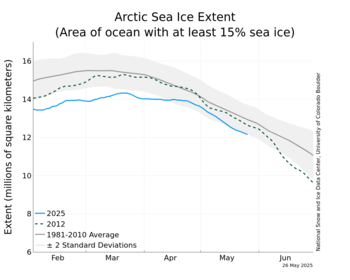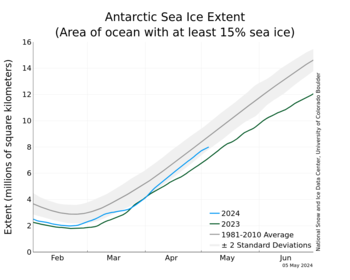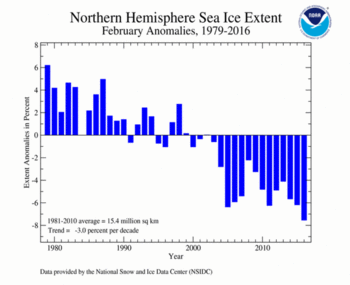Arctic sea ice at a record low
Global Snow and Ice - February 2016 | State of the Climate | National Centers for Environmental Information (NCEI)
According to the National Snow and Ice Data Center (NSIDC), the Northern Hemisphere (Arctic) sea ice extent — which is measured from passive microwave instruments onboard NOAA satellites — averaged for February 2016 was 14.22 million square km (5.49 million square miles), 1.16 million square km (450,000 square km), or 7.54 percent, below the 1981-2010 average. This was the smallest February sea ice extent on record for the Arctic, 180,000 square km (70,000 square miles) smaller than the previous record in 2005. February is the second consecutive month with record-low Arctic sea ice. Arctic sea ice typically expands during the cool season, reaching the maximum extent in mid-March. However, in February 2016,
sea ice did not expand during the first three weeks of the month, with a slight increase towards the end of the month. The Arctic was much warmer than average during January and February, limiting ice expansion during the latter part of winter. During February in the Arctic, sea ice extent was below average in the Barents, Kara, and East Greenland seas and the Gulf of St. Lawrence on the Atlantic side and the Bering Sea on the Pacific side. Sea ice extent actually decreased in the Barents and East Greenland seas. Sea ice levels were near average for the Sea of Okhotsk, Baffin Bay, and the Labrador Sea. February Arctic ice extent is decreasing at an average rate of 2.9 percent per decade.
Poor Ms. Elektra, once again flapping yap with zero proof of anything that she says. LOL


